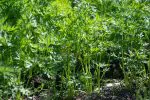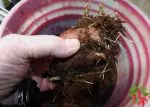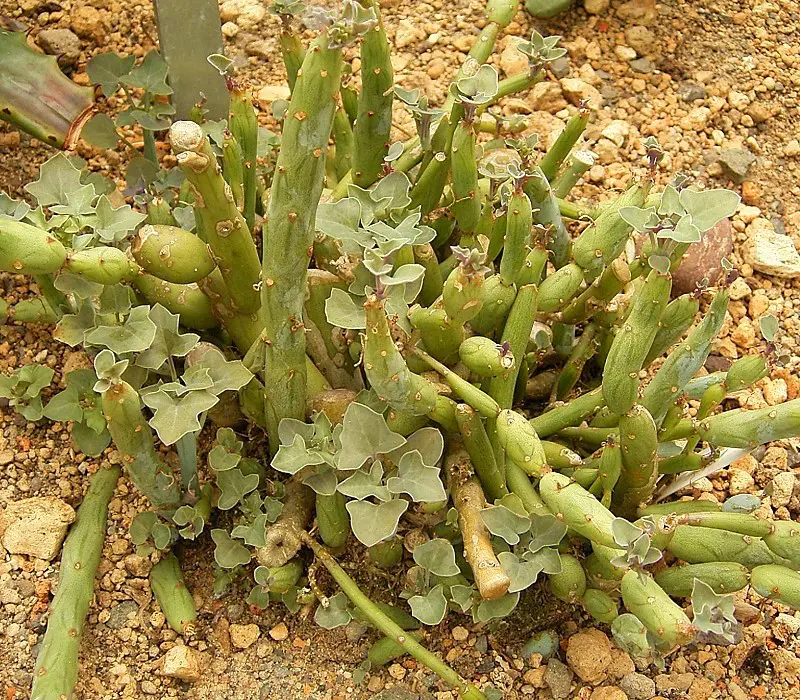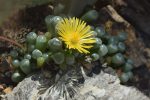This post contains affiliate links. If you buy something from one of our links we may earn a commission. Thanks
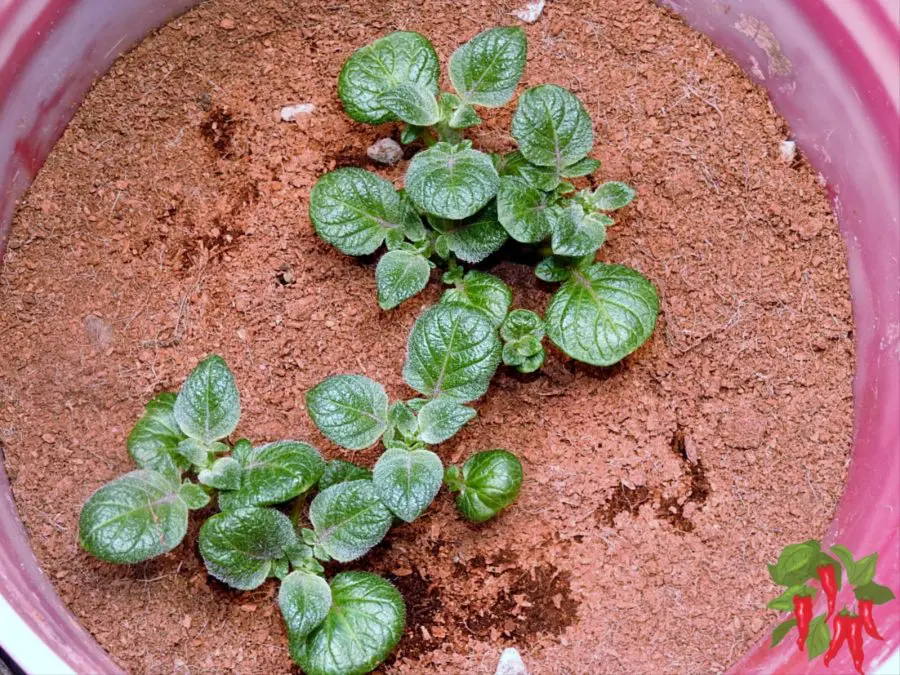
Discover the benefits of “Coco Coir vs Peat Moss” in our in-depth comparison. Learn why eco-friendly coco coir is a top choice for sustainable gardening.
The benefits of coco coir over peat moss include better water retention, increased aeration, and a more neutral pH level. Coco coir is also a sustainable and renewable resource, unlike peat moss, which is harvested from peat bogs that take centuries to regenerate. Both are used for soil amendment, but coco coir offers environmental and horticultural advantages.
Are you looking to level up your gardening game?
It’s time to dive into the world of “Coco Coir vs. Peat Moss” and explore the differences between these two popular growing mediums.
In this guide, we’ll compare their properties, discuss their environmental impacts, and help you decide why coco coir might just be the eco-friendly champion your garden needs.
So, let’s get started and make your green thumb even greener!
Coco Coir vs Peat Moss: A Comprehensive Comparison
Welcome, fellow gardeners! In today’s discussion, we’ll be exploring the fascinating world of growing mediums, specifically focusing on coco coir and peat moss.
We’ll take a closer look at their unique properties, how they affect plant growth, and the environmental implications of each.
By the end of our blog post, you’ll have a better understanding of these two mediums and be better equipped to make an informed decision for your vegetable gardens or houseplants.
So, grab a cup of Jo, and let’s dig in!
Canna Coco Is What I Use And Recommend
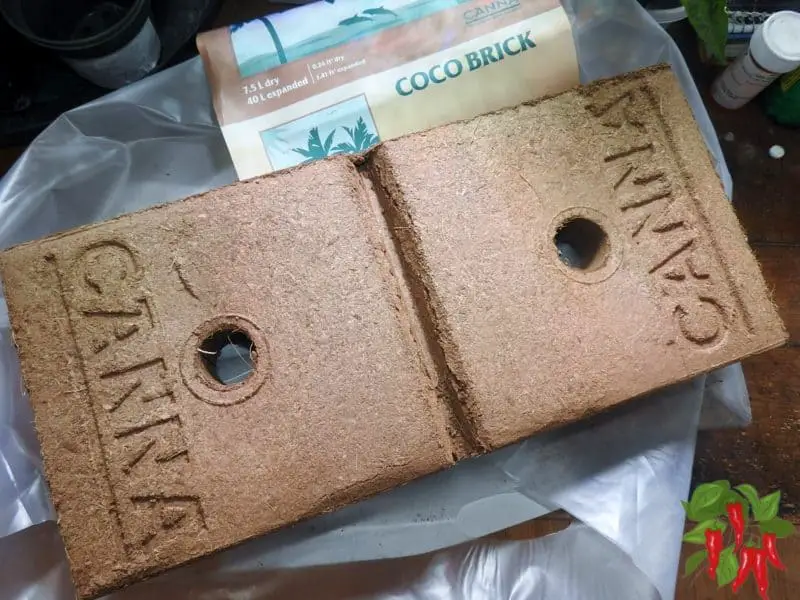
Before we get into the nitty gritty of comparing coco coir and peat moss I want to recommend the best coco coir products to use so you get started off on the right foot.
Canna Coco Is What I Use And Recommend
All coco coir is not created equally. Some cheaper brands contain high levels of salt making them unsuitable for growing plants.
Canna coco is prebuffered and very low in salts.
It also has consistently high quality and I have tried other brands but it still remains the best quality coco coir on the market.
It is available as coco bricks or loose and ready-to-use.
Coco has unique properties and requires a fertilizer made for coco for best results. Canna started the coco revolution and Coco A & B is still the best.
If you follow directions growing your own vegetables or other container plants in coco coir becomes foolproof.
Coco Coir and Peat Moss: A Quick Overview
First things first, let’s get to know our main characters: coco coir and peat moss.
Both of these materials are widely used as growing mediums in garden applications in the gardening world.
Coco coir is a natural byproduct of the coconut industry, made from the fibrous husks of coconuts.
A lot of coco coir comes from Sri Lanka. On the other hand, peat moss is an organic material formed from decomposed plants, primarily sphagnum moss, in peat bogs over thousands of years.
It is a natural product but not really sustainable because harvesting causes significant environmental damage.
A lot of sphagnum peat comes from Canada. Each medium has its own set of unique properties that make it suitable for different gardening applications.
The Quest for Sustainability and Effectiveness
As environmentally conscious gardeners, we all want to do our part to minimize our impact on the planet.
Choosing a sustainable and effective growing medium is one way we can make a difference.
By understanding the environmental implications of our choices, we can opt for mediums that not only promote healthy plant growth but also contribute to a greener and more sustainable future.
Our Mission: Unveiling the Superior Medium
In our journey together, we aim to compare and contrast coco coir and peat moss in various aspects, such as their physical properties, nutritional value, and environmental impact.
Our ultimate goal is to help you understand why coco coir might be a better choice for your gardening needs.
By the end of our discussion, you’ll be equipped with the knowledge to make an informed decision for your garden and the environment.
So, let’s continue our exploration and uncover the truth about these fascinating growing mediums!
What is Coco Coir?
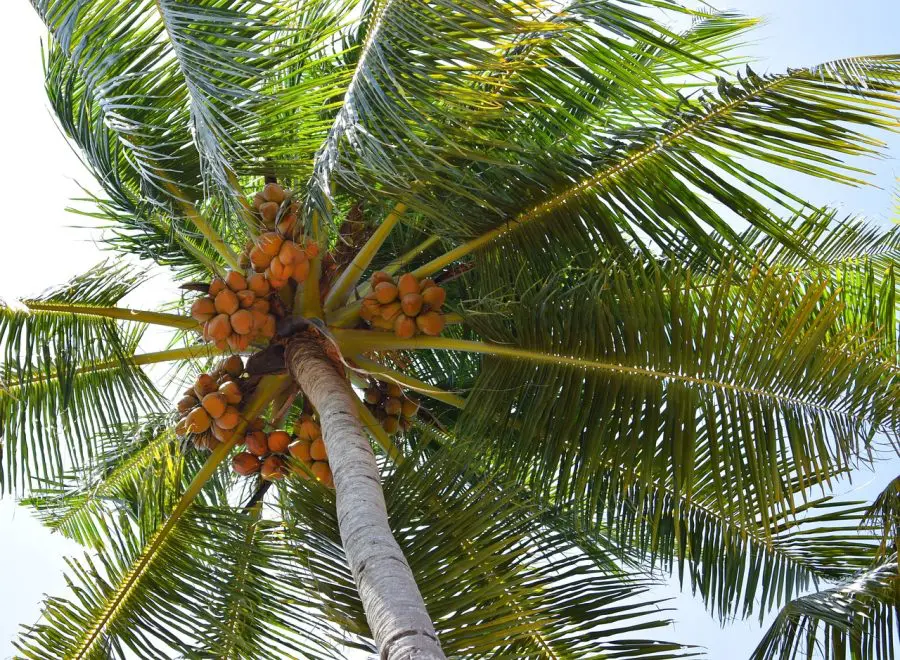
Ready to dive into the world of coco coir?
This amazing growing medium is gaining popularity among gardeners and for good reason!
In this section, we’ll give you the lowdown on what coco coir is, where it comes from, and the different types of coco coir products available.
By the end, you’ll be well-versed in all things coco coir and ready to take your gardening skills to new heights.
So let’s get started and explore the wonders of this coconut-based superstar!
Coco Coir Unveiled: Definition and Source
Let’s kick things off by answering the question, “What is coco coir?”
Simply put, coco coir is a natural, fibrous material derived from the outer husks of coconuts.
It might be surprising to learn that something as ordinary as a coconut can be transformed into a fantastic growing medium, but it’s true!
Coco coir’s unique properties make it an excellent choice for gardening enthusiasts like us.
From Husk to Coir: The Transformation Process
So, how does a coconut husk become the coco coir we know and love?
The journey begins with the coconut industry, where the outer husks are separated from the inner shells during processing.
These husks are then soaked in water to soften and loosen the fibers.
Afterward, the fibers are extracted, cleaned, and dried, resulting in the raw material we call coco coir.
The entire process is a perfect example of resourcefulness and sustainability, as it repurposes what would otherwise be a waste product.
The Coco Coir Family: Types of Products
Now that we know how coco coir is made, let’s explore the different types of coco coir products available for our gardening needs.
There are four main types of coir fiber you’ll find on the market:
Coco coir pith: This fine, dust-like material is highly absorbent and provides excellent water retention, making it perfect for seed starting and as a soil amendment.
Coco coir chips: Coco chips are larger, irregularly shaped pieces that offer better aeration and drainage, making them an ideal choice for potting mixes and hydroponic systems.
Coco coir fibers: Also known as coir “bristle,” these long fibers are often used in erosion control, hanging baskets, coir pots, door mats and as a component in custom potting mixes.
What Is Coco Peat?
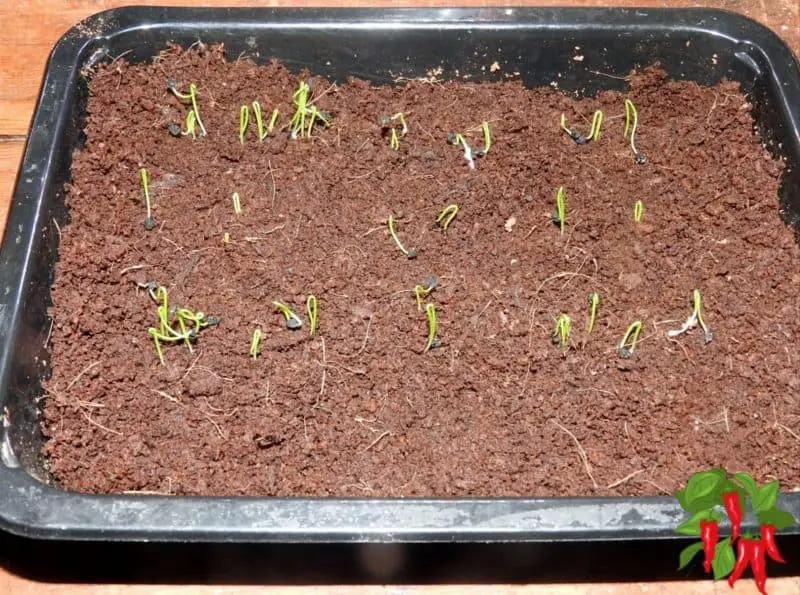
Coco peat, also known as coir pith or coco coir, is a natural byproduct of the coconut fiber processing industry. This is the fourth type of coco product.
It is derived from the husks of coconuts, which are first soaked in water and then processed to extract the long fibers used for making coir products like ropes, mats, and brushes.
The remaining material, which consists of short fibers and dust-like particles, is what we refer to as coco peat.
Coco peat has gained popularity as a growing medium for gardening and horticultural use in recent years due to its excellent water retention, excellent aeration, and drainage properties.
It is also an environmentally friendly alternative to peat moss, as it is a renewable and sustainable resource.
In addition to being used as a standalone growing medium, coco peat is often mixed with other materials like perlite, vermiculite, or compost to create custom blends tailored to specific plant needs.
You can choose the type of coco coir product that best suits your gardening goals, whether it’s starting seeds, growing in containers, or even hydroponics systems.
For most home gardeners coco peat will be your top pick either compressed into bricks or sold loose in bags. The versatility of coco coir makes it a true gardening superhero!
Horticultural Grade Coco Coir
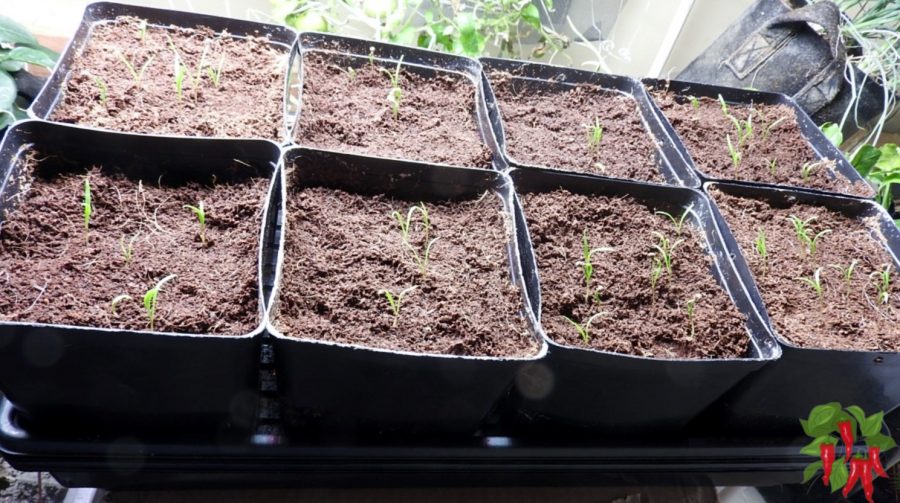
Horticultural grade coco coir is a specially processed form of coco coir that’s designed specifically for use in gardening and horticulture applications.
This type of coco coir undergoes rigorous quality control measures to ensure its consistency, cleanliness, and suitability for growing a wide variety of plants.
During the production of horticultural grade coco coir, the raw coconut husk fibers are washed, buffered, and sometimes even treated with beneficial microbes to create a more favorable environment for plant growth.
Because coconut palms grow by the seashore they are salt tolerant but they take in a large amount of salt that must be removed from the coconut coir fiber before plants can grow in it.
The buffering process removes excess salts and adjusts the pH to a more neutral range, which is essential for optimal nutrient uptake by plants.
Horticultural grade coco coir comes in several forms, including pith, chips, and fibers, depending on your specific gardening needs.
It can be used as a standalone growing medium or mixed with other components, such as perlite, vermiculite, or compost, to create custom potting mixes tailored to your plant’s requirements.
Choosing horticultural grade coco coir is the first step to ensure that you’re providing your plants with a high-quality, sustainable growing medium that promotes healthy root development, proper drainage, and superior water retention.
It’s an excellent choice for environmentally-conscious gardeners looking to give their plants the best possible start in life.
What is Peat Moss?
Now that we’ve explored the wonders of coco coir, it’s time to turn our attention to its counterpart, peat moss.
This popular growing medium has been a go-to choice for gardeners for decades, but what exactly is it?
In this section, we’ll delve into the world of peat moss, discussing its origins, formation, and various uses.
By the end of our post, you’ll have a solid understanding of peat moss and how it compares to coco coir.
So let’s get started and uncover the mysteries of this long-time gardening favorite!
Peat Moss Uncovered: Definition and Source
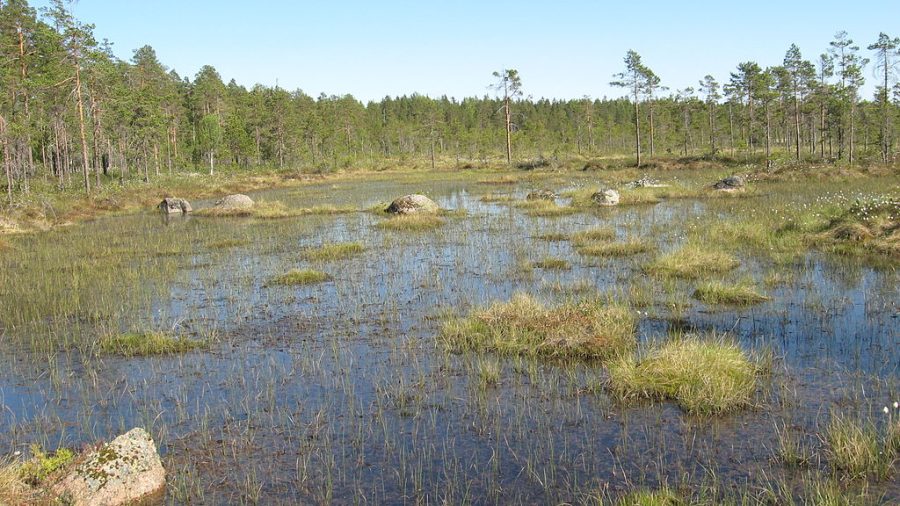
First things first, let’s define peat moss.
Peat moss is an organic material made up of decomposed plant matter, primarily sphagnum moss, along with other plants found in peat bogs.
These bogs are unique wetland ecosystems that can be found in various parts of the world, with a significant portion located in Canada, Northern Europe, and Russia.
Peat moss has been widely used in horticulture for years due to its excellent water-holding capacity and ability to create an ideal environment for plant growth.
The Making of Peat Moss: Formation Process
Peat moss forms over thousands of years through a fascinating natural process.
In peat bogs, the waterlogged, acidic conditions slow down the decomposition of dead plant material.
As the plants die and accumulate, they form a thick, spongy layer of partially decomposed organic matter, which we know as peat moss.
This slow formation process means that peat moss is a non-renewable resource, as it takes a very long time to regenerate once it’s harvested.
The Peat Moss Palette: Types of Products
Peat moss products come in various forms to suit different gardening applications. Here are a few common types you might encounter:
Sphagnum peat moss: This is the most popular type, made from partially decomposed sphagnum moss.
It’s often used as a soil amendment to improve water retention and aeration or as a component in potting mixes.
It is used as the basis for most commercial potting soils.
Reed-sedge peat: Derived from decomposed reeds and sedges, this type of peat moss has a coarser texture than sphagnum peat moss and is typically used in landscaping applications.
Peat humus: This dark, well-decomposed peat product is rich in nutrients and used as a soil conditioner or to create custom blends for specific plant needs.
Each type of peat moss product has its own unique properties and benefits, but it’s essential to consider the environmental impact of peat moss harvesting when deciding on the best growing medium for your garden.
Comparing Coco Coir and Peat Moss
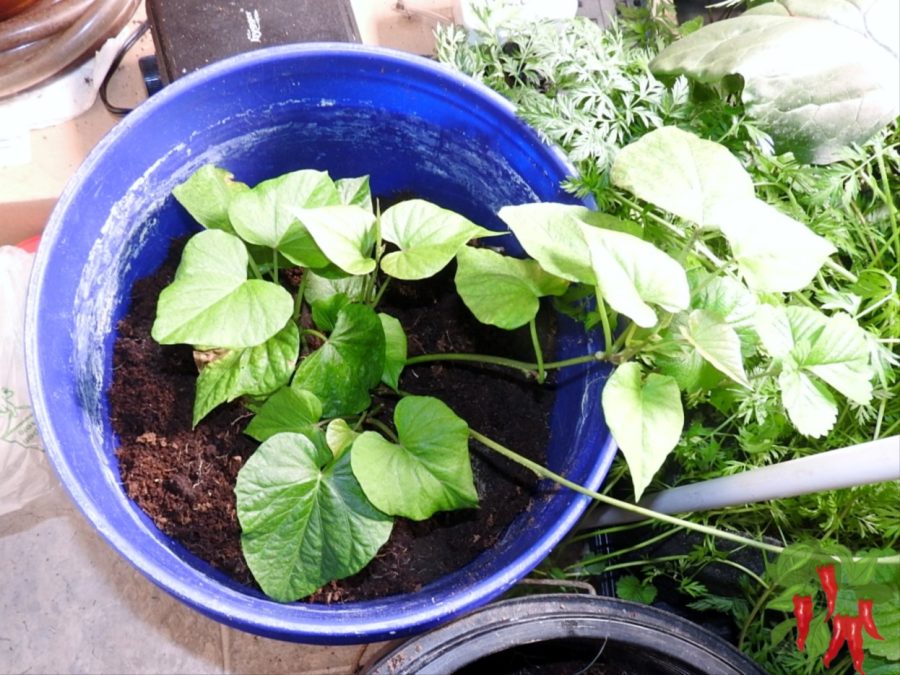
Alright, fellow gardeners, it’s time for the main event!
Now that we’ve learned about both coco coir and peat moss, let’s put them head-to-head in a friendly comparison.
In this section, we’ll examine their properties, advantages, and drawbacks, helping you determine which growing medium is the right fit for your garden.
Grab your gardening gloves and let’s dive into this exciting showdown between two popular choices in the world of horticulture!
Physical Properties Showdown
Texture and Structure:
Coco coir has a loose, fibrous texture, while peat moss is spongy and finer in structure.
Both materials create a well-draining environment, but coco coir’s larger particles provide slightly better aeration, which can be beneficial for root system development.
Water Retention and Drainage:
Both coco coir and peat moss excel at retaining water, but coco coir has an edge when it comes to drainage.
Peat moss can sometimes hold too much water, leading to overly saturated plant roots.
Coco coir strikes a balance between water retention and drainage, ensuring your plants don’t get waterlogged.
Because of its structure and good drainage coco can hold a lot of water without becoming waterlogged or soggy.
Aeration:
As mentioned earlier, coco coir offers better aeration compared to peat moss. The larger particles in coco coir allow for more air pockets, which helps prevent root zone compaction and promotes healthy root growth.
Compaction:
Over time peat moss can compress and compact making it harder for roots to grow.
Coconut coir on the other hand remains loose and does not compact. Plant roots easily grow in this media and it produces more and more fibrous roots then peat.
Nutritional Properties Face-Off
pH Levels:
Peat moss tends to be more acidic, with a pH level between 3.5 and 4.5, while coco coir has a more neutral pH range of 5.5 to 6.8.
Depending on your plants’ preferences, you may need to adjust the pH of your growing medium accordingly.
Nutrient Content and Availability:
Peat moss has limited nutrients, whereas coco coir is rich in potassium and trace elements.
However, both mediums require additional fertilization to provide plants with all the essential nutrients they need.
Coco coir’s neutral pH also makes nutrients more available to plants compared to the more acidic peat moss.
Suitability for Different Plants:
While both coco coir and peat moss can be used for a wide variety of plants, some species may prefer one medium over the other.
Acid-loving plants like blueberries and azaleas may thrive better in peat moss, while plants like most vegetables and many houseplants that prefer a more neutral pH might do better in coco coir.
Environmental Impact Battle
In The Interest Of Sustainability:
Coco coir is the clear winner when it comes to sustainability. It’s a renewable byproduct of the coconut industry, whereas peat moss is a non-renewable resource that takes thousands of years to form.
Carbon Footprint:
Peat moss harvesting releases large amounts of stored carbon into the atmosphere, contributing to climate change. This is not a good thing.
Coco coir, on the other hand, has a much smaller carbon footprint, as it’s made from a waste product of the coconut industry.
Biodiversity:
Peat bogs are unique ecosystems that support a diverse range of plant and animal species.
Harvesting peat moss can disrupt these ecosystems and destroy wetlands while using coco coir has no negative impact on biodiversity.
In conclusion, while both coco coir and peat moss have their advantages, coco coir emerges as the more sustainable and environmentally-friendly option.
Advantages of Coco Coir
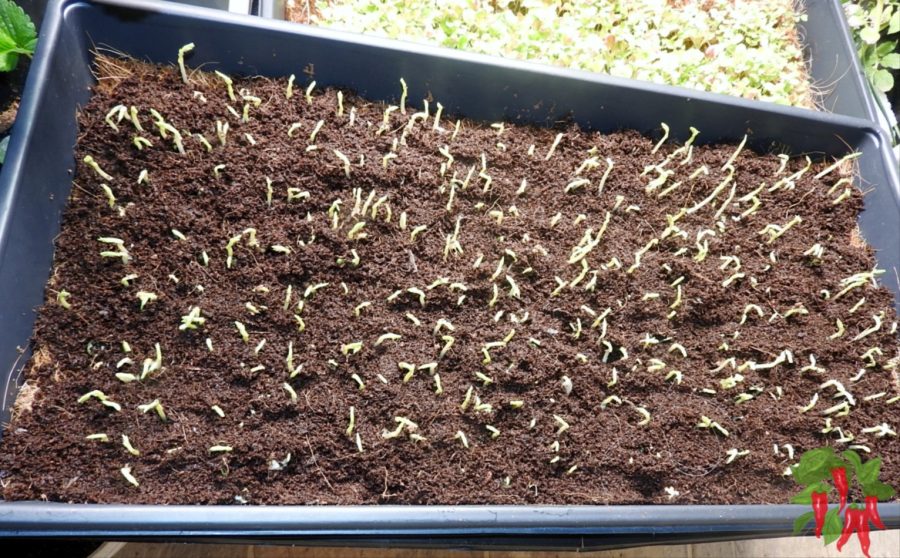
As we continue our gardening adventure together, it’s time to delve deeper into the use of coco coir and discover why it’s such a fantastic choice for your plants.
In this section, we’ll explore the many advantages of using coco coir as a growing medium, highlighting its unique properties and benefits for your garden.
By the end of our chat, you’ll have even more reasons to consider making the switch to this versatile and eco-friendly alternative.
So let’s jump right in and learn why coco coir is a true gardening champion!
Champion of Sustainability: Renewable and Eco-friendly
One of the most significant advantages of coco coir is its eco-friendly nature. As a byproduct of the coconut industry, coco coir is a renewable resource that makes use of materials that would otherwise be discarded.
By choosing coco coir, you’re not only giving your plants a great growing medium but also supporting a more sustainable and environmentally-conscious option.
Additionally, coco coir can be reused several times while peat and peat-based soil mixes need to be discarded after a single use.
Hydration Hero: Superior Water Retention and Drainage
Coco coir’s unique structure allows it to retain water while also providing excellent drainage.
This means that your plants have access to the moisture they need without the risk of waterlogging.
In this way, coco coir strikes the perfect balance between hydration and drainage, creating an ideal environment for healthy root growth.
It also allows for excellent seed germination and because of its light texture, I use it to start all my seeds.
The Air Whisperer: Better Aeration for Root Growth
Thanks to its fibrous texture, coco coir promotes better aeration compared to other growing mediums like peat moss.
The larger particles in coco coir create more air pockets, which help prevent root compaction and encourage healthy root development.
This improved aeration is especially beneficial for plants that require more oxygen at their roots.
The Rehydration Master: Easier to Rehydrate
One of the challenges of using peat moss is that it can be difficult to rehydrate once it dries out.
Coco coir, on the other hand, rehydrates more easily and quickly, saving you time and effort when it comes to watering your plants.
This user-friendly characteristic makes coco coir an even more appealing choice for busy gardeners.
Defender of the Garden: Pest and Disease Resistance
Coco coir’s natural properties make it less susceptible to pests and diseases. The fibers are resistant to fungal growth, reducing the risk of root rot and other plant diseases.
Coco coir contains Trichoderma bacteria. This is a predator bacteria that eat the bacteria and water molds and their fungal spores that cause root rot making it an extremely rare problem growing in coco.
Coco coir is less likely to harbor pests like fungus gnats, which can be a common problem in other growing mediums.
By choosing coco coir, you’re giving your plants a strong foundation for a healthy, thriving life.
Coco Coir Can Attract Fungus Gnats
Coco coir can sometimes be prone to fungus gnats, especially if it’s not properly maintained.
Although it’s generally more resistant to pests and diseases than other growing mediums, it’s essential to take some preventive measures to minimize the risk of fungus gnats and other pests.
To Help Prevent Fungus Gnats In Your Coco Coir You Can:
• Allow the top layer of the coco coir to dry out slightly between waterings, as fungus gnats are attracted to consistently damp environments.
• Use yellow sticky traps near your plants to catch adult fungus gnats and monitor their population.
• Implement biological control methods, such as introducing beneficial nematodes or predatory mites, which can help reduce fungus gnat larvae populations.
• You can apply BT (bacillus thurengenisis) to the soil Bacillus thuringiensis – Wikipedia
• A layer of sand or diatomaceous earth applied to the surface can prevent flies from laying eggs in the soil.
• Ensure proper ventilation and air circulation around your plants, as this can help keep the growing medium drier and less hospitable to fungus gnats.
By following these practices, you can help keep your coco coir free of fungus gnats and maintain a healthy environment for your plants.
It is important to note fungus gnats can be a problem in peat moss or peat-based soil mixes too.
Disadvantages of Peat Moss
As we explore the world of growing mediums, it’s essential to look at both sides of the coin.
While peat moss has been a long-time favorite among gardeners, it’s not without its drawbacks.
In this section, we’ll discuss some of the disadvantages of using peat moss in your garden, from environmental concerns to potential challenges with plant growth.
By understanding the full picture, you’ll be better equipped to make an informed decision about the best growing medium for your plants.
So, let’s dive into the less glamorous side of peat moss and see what we can learn together!
Depleting the Earth: Non-renewable Resource
One of the main disadvantages of using peat moss is that it’s a non-renewable resource.
Peat moss forms over thousands of years in peat bogs, and once it’s harvested, it takes a very long time to regenerate.
This means that using peat moss contributes to the depletion of these unique ecosystems, which raises concerns about its long-term sustainability.
Going Green: Environmental Concerns
Peat moss harvesting also comes with environmental concerns.
The extraction process can lead to the release of stored carbon into the atmosphere, contributing to climate change.
Harvesting peat also releases large amounts of CO2 into the atmosphere.
Additionally, peat bogs are important habitats that support a diverse range of plant and animal species, and their disruption can negatively impact biodiversity.
Water Woes: Difficulty in Rehydration
Another disadvantage of peat moss is that it can be challenging to rehydrate once it dries out.
This can make it more difficult to maintain a consistent high level of moisture for your plants, leading to potential stress and reduced growth.
In contrast, coco coir rehydrates more easily, making it a more user-friendly option for busy gardeners.
Quality Quandary: Less Consistent Structure and Quality
Peat moss can sometimes have a less consistent structure and quality compared to coco coir.
The texture of peat moss can vary depending on its source and the degree of decomposition, which can affect its water retention and drainage properties.
On the other hand, coco coir tends to have a more uniform texture and structure, providing a more predictable growing medium for your plants.
How to Use Coco Coir in Your Garden
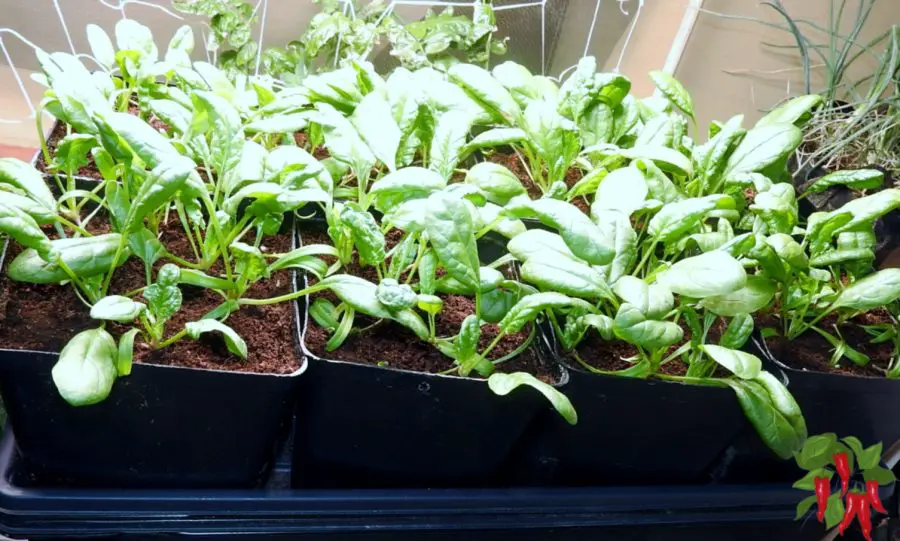
Now that we’ve explored the ins and outs of coco coir, you’re probably eager to give it a try in your own garden!
In this section, we’ll walk you through the process of using coco coir, from preparing the growing medium to planting and maintaining your thriving green oasis.
Whether you’re a seasoned gardener or just starting your journey, you’ll soon see how easy and rewarding it can be to incorporate coco coir into your gardening routine.
So, let’s roll up our sleeves and get ready to take your garden to new heights with this sustainable and versatile growing medium!
Coco coir can be used for raised garden beds and great addition to the garden soil as a soil amendment to improve the soil structure of clay soil and increase the moisture-holding capacity of sandy soils.
Because coco coir does not compact it is excellent for container gardening.
The Coco Coir Kickoff: Preparing Coco Coir for Use
Before introducing coco coir to your garden, it’s important to prepare it correctly.
• Coco coir often comes in compressed blocks, which need to be soaked in water to expand and become usable. Follow these simple steps to prepare your coco coir:
• Place the compressed block in a large container or tub.
• Add water to the container, following the manufacturer’s guidelines for the correct water-to-coir ratio.
• Allow the coco coir to absorb the water and expand, breaking it apart with your hands as needed.
• Once fully expanded, drain any excess water and allow the coco coir to reach a suitable moisture level for planting.
Rehydrating Tips
• I use Canna coco bricks and here are a few tips.
• First, it comes in a plastic bag and it can be rehydrated right in the bag. Each brick makes 5 gallons of coco but they can be broken in half if you need less.
• I find the bricks much easier to store and I have fewer problems with fungus gnats using them.
I prefer to use a plastic storage tote to rehydrate my coco and add 2 1/2 to 3 gallons of warm water for each brick.
• I also precharge my coco with 3 ml CaliMagic per gallon. This will make your coco coir ready to use and fertilize.
• Then I let it soak for about 15-30 minutes and break it up with my hands checking for any pieces that are not fully moistened.
Perfect Partners: Mixing Coco Coir with Perlite
To create an optimal growing medium, it’s a good idea to mix coco coir with perlite.
Perlite improves aeration and drainage, which can help prevent root rot and promote healthier plants. To mix coco coir with perlite, follow these steps:
• Start with a ratio of 70% coco coir and 30% perlite, adjusting as needed based on your plants’ preferences.
• You can control drainage and watering frequency by manipulating the amount of perlite in the mix.
• For plants like succulents or cacti I usually use a 50/50 mix of coco coir and perlite.
• Combine the coco coir and perlite in a large container or tub, mixing them thoroughly to ensure even distribution.
• Use the mixture as the growing medium for your plants, either in containers or directly in the garden.
Green Thumb Success: Tips for Successful Gardening with Coco Coir
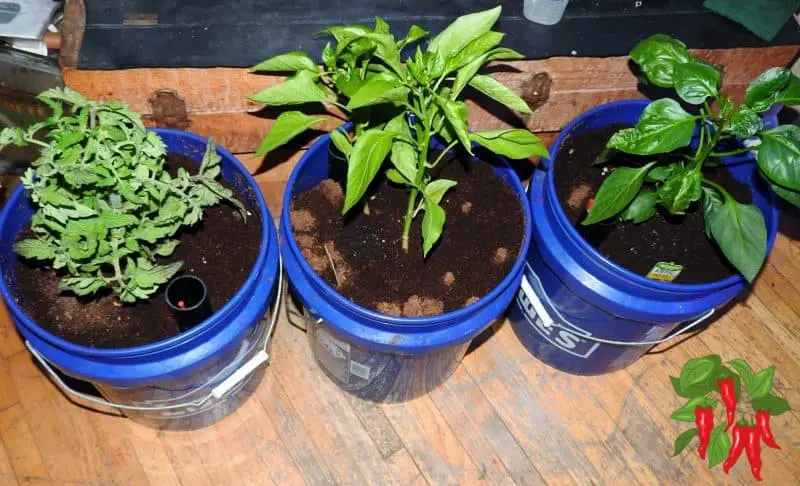
To get the most out of your coco coir gardening experience, keep these helpful tips in mind:
• Fertilize regularly: Coco coir doesn’t contain all the nutrients your plants need, so be sure to provide them with regular fertilization, following the recommendations for your specific plants.
• Monitor moisture levels: Although coco coir has excellent water retention, it’s important to check moisture levels regularly to ensure your plants are receiving enough water without becoming waterlogged.
• Adjust pH if necessary: Coco coir has a more neutral pH than peat moss, but some plants may require more acidic or alkaline conditions. Test the pH of your coco coir and adjust it as needed with the appropriate amendments.
• Keep an eye on pests: While coco coir is generally more resistant to pests and diseases, it’s still essential to monitor your plants and take action if any issues arise.
By following these tips and properly preparing your coco coir, you’ll be well on your way to a successful and sustainable gardening experience!
Coco Coir as a Hydroponic Grow Medium
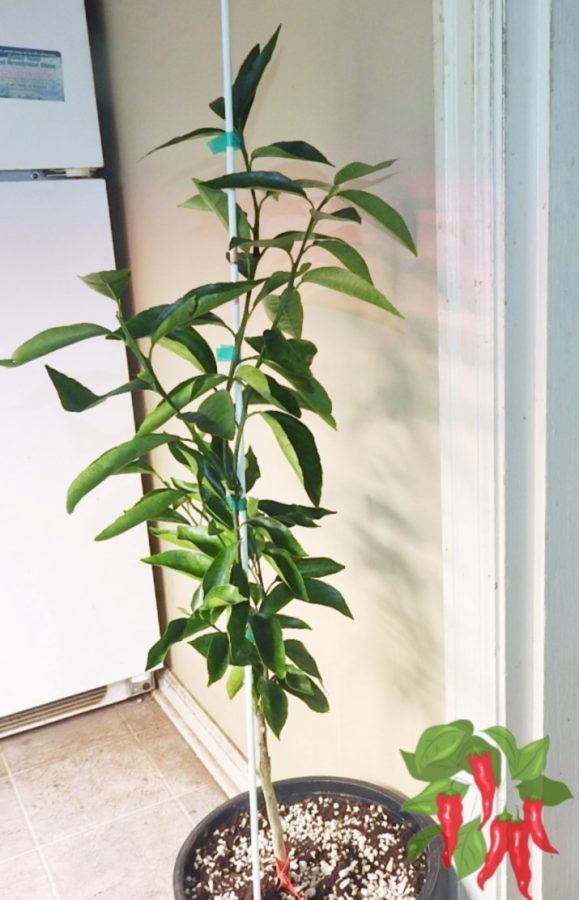
Hey there, fellow garden enthusiasts! Have you ever considered using coco coir as a hydroponic grow medium?
It’s a fantastic option that’s gaining popularity among growers worldwide. Coco coir is a versatile and sustainable choice for hydroponic systems, offering excellent water retention, aeration, and natural pest resistance.
In this section, we’ll dive deeper into why coco coir is a top choice for hydroponic gardeners and how it can benefit your plants.
Coco coir is considered a hydroponic growing medium or a soilless media like hydroton because it is inert and does not supply nutrients but when kept moist delicate new roots soon grow into strong roots that feed plants.
I am always amazed at how well roots grow in coco coir. Part of it is due to the excellent soil drainage it provides but I think the better aeration it provides is the secret. Most people don’t understand roots need oxygen to grow.
Coco Coir Quirks – It’s Different
Now that you’re familiar with the idea of using coco coir in hydroponics, let’s talk about some of its quirks.
Coco coir might be a bit different from what you’re used to, but don’t worry!
With a little understanding and proper care, your plants will thrive in this unique growing medium.
In this section, we’ll go through some important aspects of working with coco coir, such as fertilizing, the need for calmag, moisture management, and the importance of continuous feeding.
Fertilizing Coco: The Balancing Act
When it comes to fertilizing coco coir, it’s essential to strike the right balance.
Coco coir has a natural ability to hold onto some nutrients like potassium more than others at the expense of calcium and magnesium.
This means you’ll need to adjust your feeding schedule and concentrations to avoid over-fertilizing or starving your plants.
The key is to monitor your plants and adapt your feeding regimen to ensure they receive the nutrients they need for optimal growth.
Calmag: Coco Coir’s Best Friend
One quirk of coco coir is its high affinity for calcium and magnesium, which can lead to deficiencies in your plants.
But excess potassium can prevent their availability. Without getting too technical coco only has a limited number of sites to store nutrients.
This is called CEC (Cation Exchange Capacity) You don’t want to allow potassium to fill them all.
By adding calcium and magnesium you force out excess potassium and allow other nutrients in. This is why there are nutrients designed specifically for coco coir.
So to prevent this, it’s crucial to include a calmag supplement in your nutrient solution with every watering.
Adding calmag will ensure your plants receive adequate amounts of these essential elements and maintain healthy growth throughout their life cycle.
Keeping it Moist: The Key to Happy Roots
Coco coir’s excellent water retention properties make it ideal for hydroponics, but it’s essential to maintain consistent moisture levels.
Allowing coco coir to dry out can lead to nutrient imbalances and stressed plants.
To keep your plants happy and healthy, make sure to check the moisture levels regularly and water as needed to maintain an evenly moist grow medium.
Continuous Feeding: No Plain Water Allowed
Unlike some other grow media, coco coir requires continuous feeding, meaning you should never use plain water for irrigation.
Peat is usually on a feed and then water schedule but coco coir should be fed every time. Naturally, you would not use the same strength of nutrients this way.
Instead, always include a more diluted nutrient solution every time you water your plants. This practice ensures your plants receive a steady supply of nutrients and avoids any fluctuations that could lead to deficiencies or imbalances.
Trust us; your plants will thank you for it!
Coco Coir FAQs
If you’ve ever wondered about the pros and cons of using coco coir versus peat moss in your garden, you’re not alone.
These two soil amendments are commonly used for various gardening and landscaping needs.
Both have unique characteristics that offer benefits to plants, but how do you know which one is right for your specific situation?
Let’s delve into some frequently asked questions to help clarify their differences and advantages.
Q: What is coco coir?
A: Coco coir is a natural fiber extracted from the husk of coconuts. It is widely used as a soil amendment and offers excellent water retention and aeration properties.
Q: What is peat moss?
A: Peat moss is an organic material harvested from peat bogs. It’s commonly used in gardening for its ability to retain moisture and improve soil structure.
Q: Is coco coir more sustainable than peat moss?
A: Yes, coco coir is generally considered to be more sustainable because it’s a byproduct of the coconut industry and is renewable.
Peat moss, on the other hand, comes from peat bogs that take centuries to regenerate.
Q: How do the pH levels compare between coco coir and peat moss?
A: Coco coir usually has a neutral pH level, making it suitable for a wide range of plants.
Peat moss is more acidic, which may require pH adjustments depending on the plants you are growing.
Coco Coir vs Peat Moss Final Thoughts
In conclusion, as we’ve explored the world of Coco Coir vs. Peat Moss, it’s clear that coco coir has emerged as a more sustainable, versatile, and eco-friendly alternative to traditional peat moss.
With its excellent water retention, superior aeration, and environmental benefits, coco coir provides a fantastic growing medium for gardeners looking to make a positive impact on both their plants and the planet.
While peat moss has been a popular choice for many years, the increasing awareness of its environmental drawbacks and the rise of sustainable alternatives like coco coir make it an ideal time to reevaluate our gardening practices.
By embracing coco coir and following the tips provided in this blog post, you’ll be well on your way to a flourishing garden that’s not only healthy and productive but also kinder to the Earth.
So, let’s join hands as responsible gardeners and make the switch to coco coir, championing a more sustainable future for our gardens and our planet!
Recap of the Comparison Between Coco Coir vs Peat Moss
As we wrap up our discussion, let’s take a moment to revisit the key differences between coco coir and peat moss:
• Origin and Sustainability:
Coco coir, a byproduct of the coconut industry, is a renewable and eco-friendly resource. Peat moss, on the other hand, is a non-renewable resource that takes thousands of years to form and raises environmental concerns.
• Physical Properties:
Coco coir offers superior water retention and drainage, as well as better aeration for root growth, while peat moss can be more challenging to manage in terms of moisture and aeration.
Nutritional and pH Properties:
Both coco coir and peat moss require additional fertilization, but coco coir has a more neutral pH that can be adjusted to suit various plant needs.
• Environmental Impact:
The harvesting of peat moss contributes to carbon emissions, habitat loss, and reduced biodiversity, while coco coir production has a lower environmental impact.
• Green Gardening Goals:
Encouragement for Choosing Coco Coir as a Sustainable and Effective Growing Medium
By choosing coco coir as your go-to growing medium, you’re making a conscious decision to support a more sustainable and environmentally responsible gardening practice.
With its many advantages, including better water management, improved aeration, and lower environmental impact, coco coir is a smart choice for gardeners who want to make a difference.
So, let’s embrace the power of coco coir and embark on a greener gardening journey.
Together, we can cultivate thriving gardens while also nurturing a healthier planet for future generations to enjoy. Happy gardening!
Read more: Apartment Kitchen Garden-Apartment Gardening Tips For Beginners







